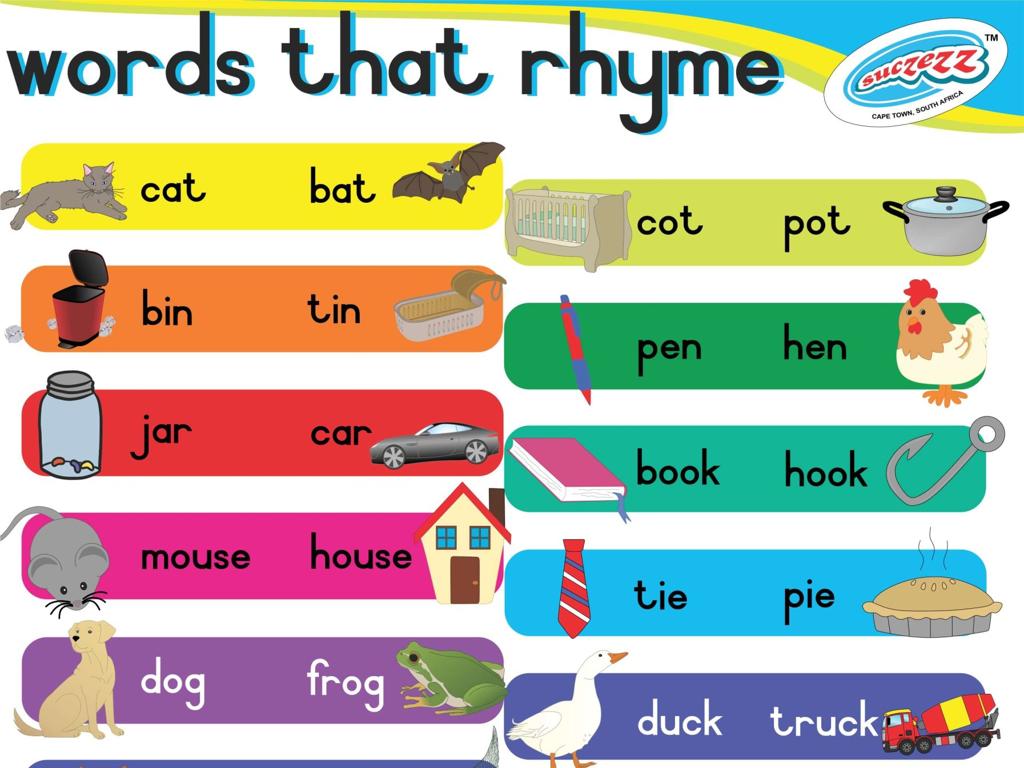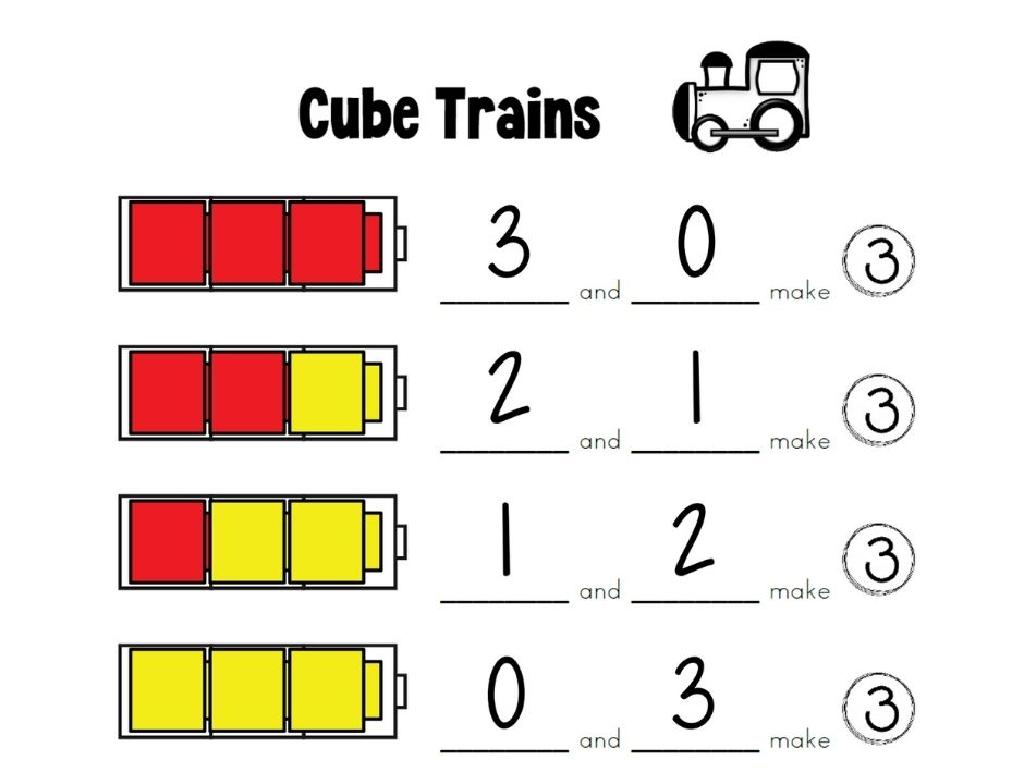Comparison Word Problems Up To 10: How Many Fewer?
Subject: Math
Grade: First grade
Topic: Comparison Word Problems Up To 10
Please LOG IN to download the presentation. Access is available to registered users only.
View More Content
Today’s Adventure: Comparison Word Problems!
– Understanding ‘More’ and ‘Less’
– ‘More’ means a larger number, ‘less’ means a smaller number
– Comparing with words
– Use words like ‘fewer’ or ‘greater’ to compare two amounts
– Solving ‘how many fewer’ problems
– Find the difference between two numbers to see ‘how many fewer’
– Practice with real examples
– Example: If Tom has 8 apples and Jerry has 3, how many fewer apples does Jerry have?
|
This slide introduces first graders to the concept of comparison in math using word problems. The goal is to help students understand the terms ‘more’ and ‘less’ and to use these concepts to compare quantities. Emphasize the use of comparison words such as ‘fewer’ and ‘greater’ to describe the relationship between two numbers. Through solving ‘how many fewer’ problems, students will practice finding the difference between two numbers. Provide real-life examples and encourage students to visualize the problem to enhance understanding. During the lesson, engage the students with hands-on activities where they can physically compare groups of items to solidify the concept.
Understanding Comparison Word Problems
– What are comparison problems?
– Problems asking to find differences between two amounts.
– Key words: ‘more’, ‘less’, ‘fewer’
– Words that signal we’re comparing two things.
– Example problem
– Tom has 3 apples, Sally has 5. Who has fewer?
– Solving comparison problems
|
This slide introduces first graders to the concept of comparison word problems, which are a fundamental part of early math education. The focus is on understanding the language used in these problems, such as ‘more’, ‘less’, and ‘fewer’. Use the example provided to illustrate how these words help us determine who has a smaller quantity. Encourage students to visualize the problem with actual objects or drawings to aid comprehension. In class, practice with similar problems to reinforce the concept and develop problem-solving skills. Remember to praise efforts and correct answers to build confidence.
Understanding ‘Fewer’ in Word Problems
– ‘Fewer’ means a smaller amount
– Comparing with ‘fewer’
– If Tom has 3 apples and Sally has 5, Tom has fewer apples.
– Counting to find ‘fewer’
– Use objects or drawings to count and compare amounts.
– Practice with examples
– Example: 4 pencils and 7 pencils which is fewer?
|
This slide introduces the concept of ‘fewer’ to first graders, helping them understand it as meaning a smaller number or amount. Start by explaining the term with simple language and then use relatable examples, like comparing the number of apples two people have. Encourage the students to use physical objects or drawings to visualize and count the differences in quantities. Provide practice examples and guide them through the process of identifying which group has fewer items. This will help them grasp the concept of comparison using ‘fewer’ in word problems.
Let’s Practice Comparing!
– Observe two toy groups
– Count to find the group with fewer toys
– Use fingers or objects to help count each group
– Understand ‘fewer’ means ‘not as many’
– ‘Fewer’ is when one amount is smaller than another
– Practice comparing together
|
This slide is designed to engage first-grade students in a practical activity to understand the concept of ‘fewer.’ Start by showing two distinct groups of toys and ask the students to observe them carefully. Then, guide them to count the number of toys in each group, reinforcing the counting skills up to 10. Clarify the meaning of ‘fewer’ by explaining that it refers to a smaller quantity compared to another. Encourage the students to participate by counting aloud together and using physical objects like fingers or counters to represent the toys. This interactive approach helps solidify their understanding of comparison in a fun and tangible way. As an extension, you can ask students to find other items in the classroom to compare and determine which has ‘fewer’ items.
Word Problem Time: Comparing Balloons
– Count Jenny’s balloons
– Jenny has 1, 2, 3, 4 balloons.
– Count Mark’s balloons
– Mark has 1, 2, 3, 4, 5, 6, 7 balloons.
– Who has fewer?
– Compare to see Jenny has fewer balloons.
– Let’s find the difference!
– Subtract to see how many fewer Jenny has.
|
This slide introduces a simple comparison word problem to help students practice counting and comparing quantities. The problem involves Jenny and Mark, who have different numbers of balloons. Students are encouraged to count aloud and use their fingers if necessary to visualize the quantities. After counting, they should be able to identify that Jenny has fewer balloons. The teacher should guide the students through the process of subtraction to find out how many fewer balloons Jenny has, reinforcing the concept of ‘fewer’ in a practical context. This exercise will help students understand comparison and subtraction up to 10.
Using ‘Fewer’ in Sentences
– Understanding ‘fewer’ in comparison
– ‘Fewer’ means not as many; it compares two amounts.
– Crafting sentences with ‘fewer’
– Let’s create our own sentences using ‘fewer’.
– Example: Jenny and Mark’s balloons
– Jenny has 3 balloons, Mark has 5. Jenny has 2 fewer balloons than Mark.
– Your turn to make a sentence!
|
This slide introduces the concept of ‘fewer’ as a way to compare quantities in word problems. Start by explaining that ‘fewer’ is used when comparing two sets of items, and it indicates that one set has less than the other. Use the example provided to illustrate how ‘fewer’ is used in a sentence. Then, encourage students to think of their own examples, perhaps using items in the classroom or their favorite toys. This activity will help them understand the concept of comparison and prepare them for solving word problems that ask ‘how many fewer?’
Class Activity: Fewer or More?
– Fun worksheet collaboration
– Circle the group with fewer items
– Discuss: How many fewer?
– Compare two groups and find the difference
– Share findings with the class
|
This activity is designed to help students understand the concept of comparison by identifying which group has fewer items. Provide a worksheet with pairs of item groups up to 10 and instruct students to circle the group with fewer items. Then, ask them to determine how many fewer items one group has compared to the other. This exercise will reinforce their counting skills and introduce them to basic subtraction. After completing the worksheet, encourage students to share their answers and explain their thought process. Possible variations of the activity could include using physical objects, drawing item groups on the board, or creating a game where students find items in the classroom to compare.
Great Job on Learning ‘Fewer’!
– ‘Fewer’ means a smaller amount
– It’s used to compare two quantities
– Practice with different examples
– Try comparing apples to oranges
– Review helps us remember
– Let’s go over a few problems together
|
This slide is a conclusion and review of the concept of ‘fewer’ in comparison word problems. Reinforce the definition of ‘fewer’ as indicating a smaller number or amount when comparing two sets of items. Encourage students to continue practicing with various items to strengthen their understanding. Use everyday examples, like comparing the number of apples to oranges they have, to make the concept relatable. As a review, go through a few problems as a class to ensure comprehension and to provide immediate feedback. Remember to praise their efforts and progress to build confidence.






